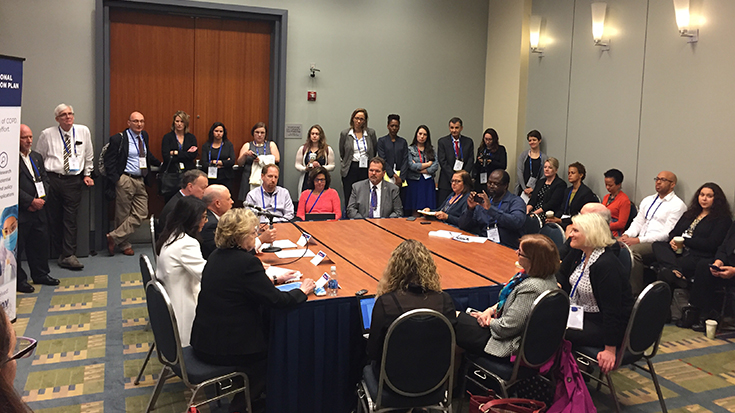
The final version of the COPD National Action Plan was released May 23 during a panel discussion that took place during the American Thoracic Society conference in Washington, DC.
“Sixteen million Americans have been diagnosed with COPD and many more have the condition but don’t know it,” says AARC CBO Timothy Myers, MBA, RRT-NPS, FAARC, who attended the event on behalf of the AARC. “This action plan addresses many of their unmet needs in a systematic fashion and will assist clinicians and researchers working to address those needs.”
Developed by the National Heart, Lung, Blood Institute (NHLBI) with input from a wide range of stakeholders, including the AARC and the COPD Foundation, the document is expected to provide a coordinated national approach to COPD that developers believe will change the national trajectory for the condition.
The AARC was officially recognized by NHLBI Director James Kiley, MD, during the press conference that preceded the unveiling of the plan for the role it played in the development of the plan.
The final plan includes five overarching goals:
Goal 1 calls for promoting more public awareness and understanding of COPD, especially among patients and their caregivers.
Goal 2 focuses on increasing the skills and education of health care providers so they will be better equipped to provide comprehensive care to people with COPD.
Goal 3 encourages increased data collection, analysis, and sharing to create a better understanding of disease patterns.
Goal 4 aims to increase and sustain COPD research to improve understanding of the disease and its diagnosis and treatment.
Goal 5 calls for federal and nonfederal partners to collaborate to meet the objectives of the Action Plan and translate its recommendations into research and public health care actions.
“The AARC was pleased to play a role in the development of the COPD National Action Plan,” says AARC Executive Director Thomas Kallstrom, MBA, RRT, FAARC. “We encourage respiratory therapists everywhere to read the document and share it with their colleagues involved in the care and treatment of people with COPD.”